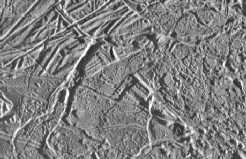This is an image of the surface of Europa.
Click on image for full size
NASA
Europa Ice Flows
This is an example of the surface of Europa. The surface may be flooded by fresh water from underground, which freezes when it touches the surface.
The edges of the flow are rounded, like a puddle of water.
The water of Europa may have flowed out of the ground the way lava flows out of a volcano on Earth.
You might also be interested in:
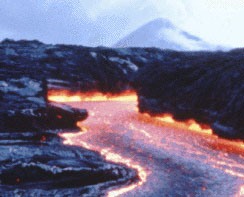
Lava can move in broad flat lava flows, or it can move through tight channels or tubes. Lava flows tend to cool quickly and flow slowly. The fastest lava outside of channels moves at about 6 mi/hr an easy
...more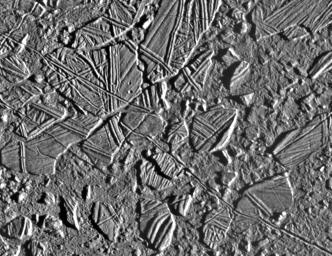
The surface of Europa shows many signs of that there may be a submerged ocean. For example, this picture shows what look like icebergs that may have broken off from a larger block of ice, floated a bit,
...more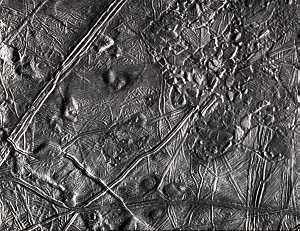
The surface of Europa shows many signs of that there may be an ocean under the surface: * flooded terrain * 'freckles' * rafting * 'mushy' craters, and * spreading centers. Taken together, these pieces
...more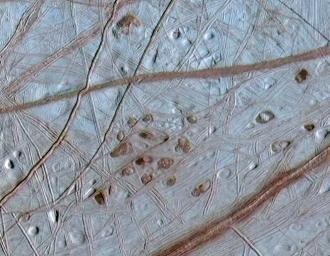
The surface of Europa shows many signs that there may be an ocean submerged under it's icy surface. For example, in this picture, the dimples, shown in red, may be a sign of material falling into a water
...more
Amalthea was discovered by E Barnard in 1872. Of the 17 moons it is the 3rd closest to Jupiter, with a standoff distance of 181,300 km. Amalthea is about the size of a county or small state, and is just
...more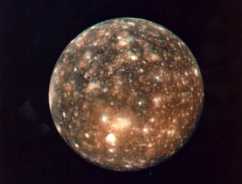
Callisto was first discovered by Galileo in 1610, making it one of the Galilean Satellites. Of the 60 moons it is the 8th closest to Jupiter, with a standoff distance of 1,070,000 km. It is the 2nd largest
...more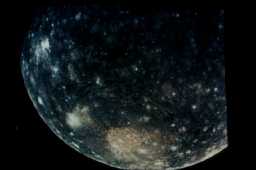
The insides of most of the moons and planets separated while they were forming out of the primitive solar nebula. Measurements by the Galileo spacecraft have been shown that Callisto is the same inside
...more


